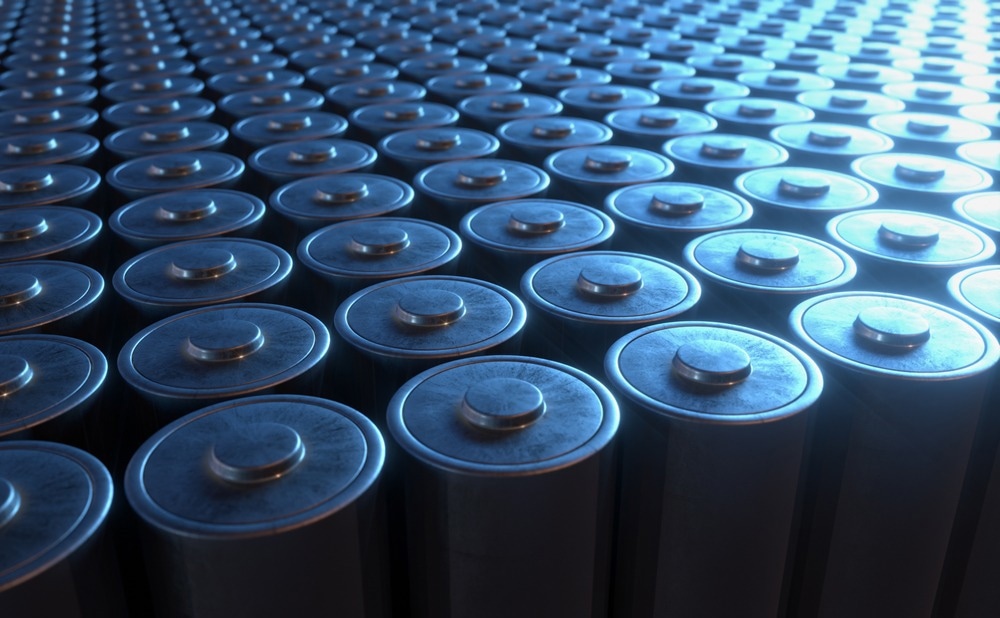Ultrafast battery charging is a key aim of research at the moment, with several key challenges which need to be overcome to achieve it. Writing in the journal ACS Energy Letters, a team of scientists from China and Israel has explored the development of lithium-ion batteries with solvent-assisted hopping mechanisms to achieve this aim.

Study: Solvent-Assisted Hopping Mechanism Enables Ultrafast Charging of Lithium-Ion Batteries. Image Credit: ktsdesign/Shutterstock.com
Improving Lithium-ion Batteries Charging Time
Lithium-ion batteries are a mature technology that has found widespread application in electric vehicles, driving the transition to a low-carbon transportation industry. First commercialized in 1991, they have undergone rapid advances in materials and device design, but there are still some key challenges to overcome.
Currently, there is a gap between lithium-ion battery rate capabilities and the requirements for extreme fast charging. This limits the ability of electric vehicles to compete with ICE vehicles in terms of refueling times, which is typically around 5-10 minutes. Meeting extreme fast charging demands requires battery components such as electrode materials, a separator, and especially electrolytes to meet stringent requirements.
Issues with Electrolytes for Fast Charging
There are three main issues with electrolytes with respect to fast charging, which hinder the development of electric vehicles that can compete commercially with gas and diesel vehicles. These are the formation of solid electrolyte interphases, sluggish interfacial kinetics causing lithium dendrite growth, and limited cut-off voltage due to poor anodic stability.
Persistent solid electrolyte interphase growth and dendrite growth are linked to solvation structure, with solid electrolyte interphase growth limiting the battery’s Coulombic efficiency and leading to high current rate-capacity fade. Issues with anodic stability and consequent cut-off voltage limitations are related to cathode electrolyte interphase instability due to solvent molecule decomposition.
Another key issue with achieving extreme fast-charging lithium-ion batteries is the pulverization of cathode particles. This is due to internal stresses being induced at high rates and leads to undesired side reactions.
Fast-Charging Electrolytes
Due to the issues with current electrolytes and the urgent need in the electric vehicle industry to provide ultrafast charging capabilities, there is a pressing need for the rapid development of new electrolytes which can overcome these challenges. Electrolytes must be suitable for both high-voltage NMC811 cathodes and fast-charging graphite anodes.
Researchers have employed several strategies to improve the fast-charging performance of electrolytes. Cosolvents have been used in early investigations to improve the ionic conductivity of electrolytes, including methyl formate and propionitrile. However, this strategy faces issues with the formation of solid electrolyte interphases.
Solid electrolyte interphase-forming additives including vinylene carbonate were explored to lower the cell’s interface resistance, but challenges persist with interface stability during lengthy cycling. High-concentrated electrolytes have demonstrated improved rate capacity but are hindered by limited substrate wetting and high viscosity. Whilst several strategies have proven promising, critical challenges persist.
The Paper
The authors have evaluated a mixed fluoroethylene carbonate/acetonitrile electrolyte as a fast-charging electrolyte with different ratios of solvent. The novel electrolyte’s solvent-hopping mechanism can overcome the critical issues of insufficient ionic conductivity and lack of passivation properties in currently explored fast-charging electrolytes.
The electrolyte possesses a novel fluoroethylene carbonate solvation structure and an acetonitrile-rich environment. The ratio of fluoroethylene carbonate/acetonitrile in the proposed electrolyte is 7/3 by volume. This ratio provides the optimal electrolyte passivation and conductivity properties and balance between film-forming abilities and ionic conductivity.
Four parameters were considered in the research to evaluate electrolytes and compare the performance of the novel electrolyte with other fast-charge options. These were ionic conductivity, operation temperature window, passivation properties, and voltage window.
Rate capability and long-term cycling performance of cells incorporating the electrolyte were evaluated, with a 92% rate capacity retention at 10C and 80% retention at 20C. ~99.9% Coulombic efficiency was observed in the tested cells. Other cells tested with different electrolytes did not achieve this performance.
GITT analysis revealed that cells using the proposed solvent-hopping electrolyte display five times less anode overpotential behavior than cells constructed with other fast-charging electrolytes. Additionally, cells constructed with the paper’s electrolyte display vastly reduced voltage hysteresis, leading to the formation of lower-resistance solid electrolyte interphases. Electrochemical impedance spectroscopy and cyclic voltammetry tests were employed to investigate kinetics in the cells.
The proposed electrolyte displays a balanced behavior compared to other fast-charging electrolytes, proving the design rationale’s validity. The ability to enhance the film-forming ability and ionic conductivity in electrolytes via solvation tuning was confirmed by the paper.
In conclusion, the paper has demonstrated the development of a novel electrolyte with solvent-assisted hopping abilities, which can be used in the rational design of ultrafast-charging lithium-ion batteries. Cells constructed with the research’s electrolyte could meet the demands of extreme fast charging, improving the competitiveness of electric vehicles with ICE vehicles in terms of charging times.
More from AZoM: How are Bioplastics Made?
Further Reading
Huang, X et al. (2022) Solvent-Assisted Hopping Mechanism Enables Ultrafast Charging of Lithium-Ion Batteries ACS Energy Letters 7 pp. 3947-57 [online] pubs.acs.org. https://pubs.acs.org/doi/10.1021/acsenergylett.2c02240
Disclaimer: The views expressed here are those of the author expressed in their private capacity and do not necessarily represent the views of AZoM.com Limited T/A AZoNetwork the owner and operator of this website. This disclaimer forms part of the Terms and conditions of use of this website.